How we will work in the future (part 1)
A look into the future, how we will work and live. Perspectives and impressions of the "Learning Journey" with vitra from New York, Seattle, San Francisco and the Bay Area. Where and how do the Amazons, Apples, Googles, AirBnBs, Slacks and Starbucks of this world work? How do they organize work so that innovation is possible and they can attract the best people in the world? How will offices be designed in the future so that collaboration and leadership function optimally in the VUCA world? What trends can be derived for workplace design in the future? And what are the consequences for change management and executive development?
Background - 27 "Insights" in 5 days
As cooperation partners of vitra, who are not only known for their wonderful furniture, but are also increasingly designing modern office worlds, the opportunity presented itself to take part in this year's "Learning Journey" on the east and west coasts of the USA. It was a unique event to gain fantastic insights into the workplace design of the future in a short period of time. In a group of 20 people under the direction of Raphael Gielgen, Head of Research & Trendscouting at vitra, the programme included lectures and discussion forums with leading architectural firms such as Gensler, BIG or O & A in addition to the "digital leading companies". This resulted in a successful mixture between innovative concepts on the one hand and living work on the other.
Trends - what is on the horizon?
Due to the multitude of impressions and the different concepts associated with them, 8 overarching trends can be derived:
1. Health as driver number 1
2. Biophilic Design.
3. Flexible interior design
4. Design follows function
5. "Resort Oasis" or "Cultural Centre"?
6. Desk sharing - yes or no?
7. Sustainability remains in vogue
8. "Culture eats strategy for breakfast, design for lunch and architecture for dinner"
In this article and in the article to be published in December, we will deal with 4 trends in each case.
Health as number 1 driver
The health of employees already plays an important role in many companies and will continue to increase significantly in the future. Energy and research flow into concepts for further improving the health, well-being and fitness of employees. In the future, there will be apps that will find the ideal workplace based on individual wishes (concentrated work, project work, view outside, room temperature, etc.) and comparison with the current available space. This is not about technical frippery, but about the idea that each person is unique and therefore needs individual workspaces, up to air temperature and humidity, in order to be able to perform an optimal cognitive performance.
Sounds rather off the beaten track at first, but ultimately follows the trend of individualization, which we have been able to follow in many areas of our lives for quite some time: from the configuration of our own car with hundreds of individual possibilities, to individualized medicine, to individualized learning starting in primary school. With our concept of a healthy organization we are optimally positioned here, perhaps one of the most important insights for us personally.
"Biophilic design"
The term biophilia, which originally goes back to Erich Fromm, means "love of life" or "love of living".
Applied to architecture, the concept of designing rooms as close to nature as possible is based on this. Studies show that people not only feel better in such an environment, but are also more creative and ultimately perform better.
Two dimensions can be distinguished: the direct relationship to nature, such as views, the near-natural roof terrace or the company's own vegetable bed. Indirectly through the use of appropriate materials from nature. Different materials trigger different feelings and body symptoms, which can also be measured. For example, bracelets have an effect on body temperature. In this context, psychoacoustics is also a trend topic, as sounds and noises influence people's well-being and ability to concentrate.
We assume that there will be solutions in the future how the acoustics in rooms can be adapted to the people and the volume in the room, so that an optimal well-being is made possible, e.g. by waves, bird calls or the crackling of a campfire.
Google, for example, is investing a lot of money here, of course also for economic reasons, since studies assume that appropriate measures can contribute up to 40% to a cognitive increase in performance. The keyword is multi-sensor technology.
Flexible interior design
Single or double rooms are definitely a thing of the past. Modern workplace design means maximum flexibility. Desks become just as mobile as walls or shelves, so that different needs can be responded to at any time. If teams are newly assembled for projects, the furniture follows accordingly. If the team grows, so does the furniture. Mobile partitions provide additional freedom. In order to then also know where someone is currently working, there will be apps that show exactly this.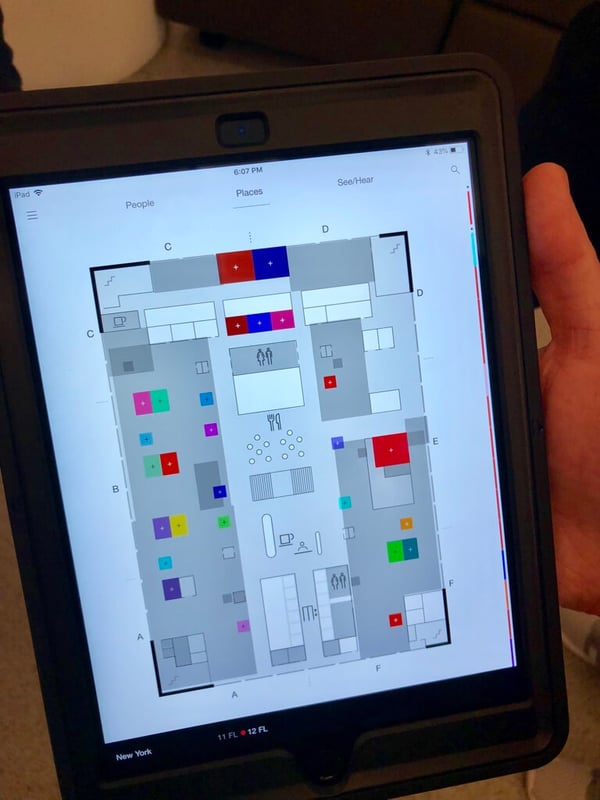
However, it can already be assumed today that the possibility of flexibility is rated higher than it will actually be used later. For this, humans are probably simply too strong a creature of habit.
„Design follows function“
There will be numerous possibilities in the future as to how and where people will work. The form of the work possibilities follows the function. For concentrated work there are retreat possibilities, for meetings with video conferences corresponding rooms for 4-6 persons, since most meetings take place in this number. Even the "cubicals" that had been hip for years, in which smaller walls in open-plan offices were used to try to create privacy, were barely visible.
In the foreground are flowing transitions in units of 4-8 persons, in which people can easily exchange and cooperate. Such units often form "studios", which in turn lead to "neighborhoods" of 40-50 people, up to "communities", with a size of up to 300 employees.
Within such communities and neighborhoods, there is a suitable number of focus rooms, collaboration rooms, creative spaces, etc., which can be used for a variety of purposes. Since work will take place wirelessly in the future, work will also be possible everywhere. As a result, workplaces will be located in all possible areas within a room: on a staircase, at the windowsill or through benches in passageways. The classic desk will eventually become obsolete. Although this will take some time, it will no longer be necessary at some point if it is consistently thought through to the end.
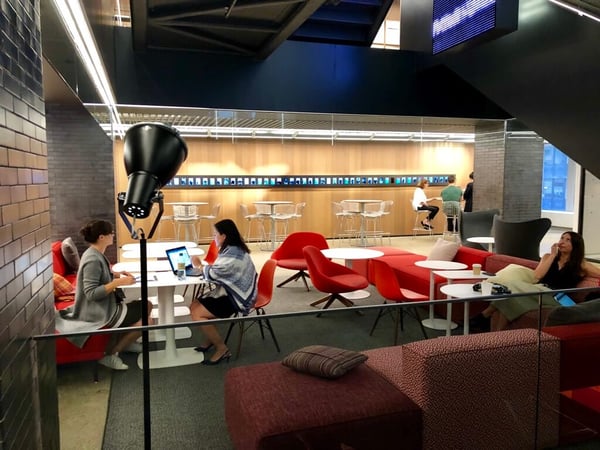
Gensler, New York
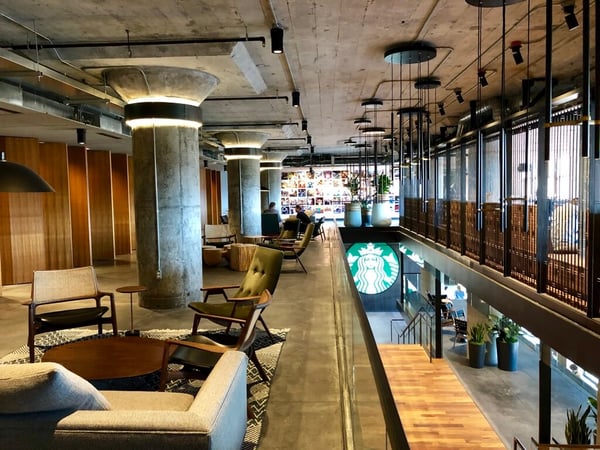
Starbucks HQ, Seattle
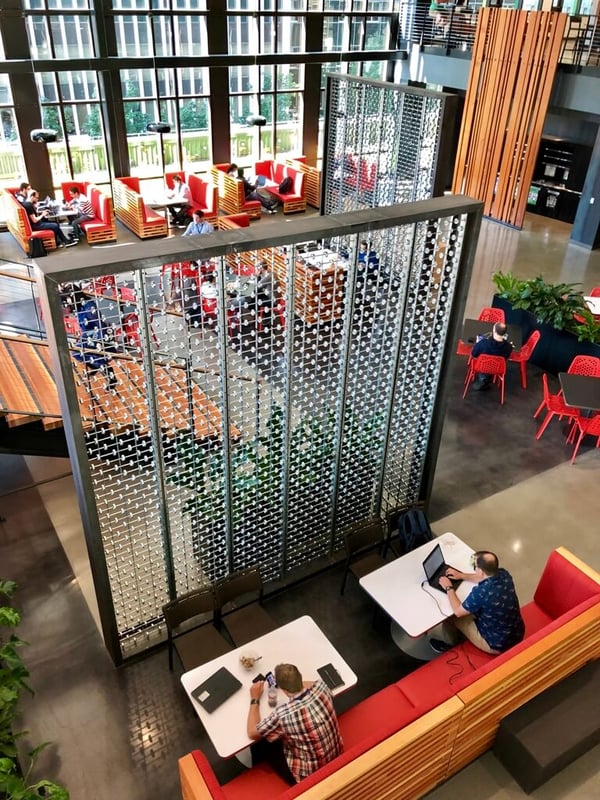
amazon HQ, Seattle
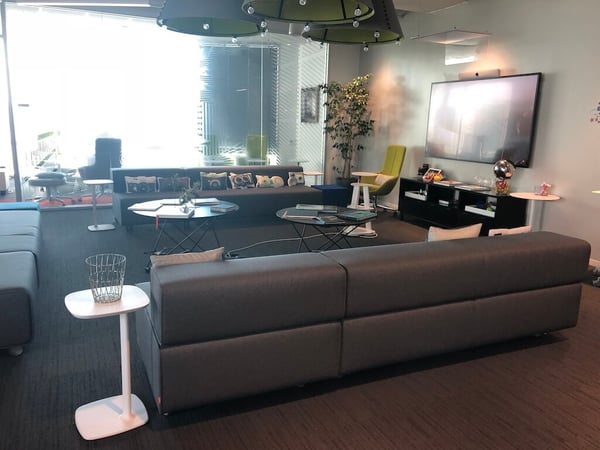
Adobe HQ, San Jose
Interim conclusion
An American colleague recently said "All organisations are in transformation because the world is in transformation" (Steve Miller). VUCA is no longer just an empty acronym, but reality. Work changes with the world. With work, the needs for cooperation, leadership and space change. Jobs that we still do today will no longer exist tomorrow. Digitalization - and the associated technical possibilities - will turn things upside down as we still know them today. But one thing has not changed: Those who can best adapt to changing conditions will survive: Responsive organisations with adaptive structures, flexible spatial concepts and a common culture.
If you have any questions about the "Learning Journey", please do not hesitate to contact us. We are also happy to put you in touch with the vitra team of experts.
Would you like to find out more about a healthy organisation? Then please feel free to inform yourself about our services in this area or simply contact us.
Further blog posts from the series "How we will work in the future":

